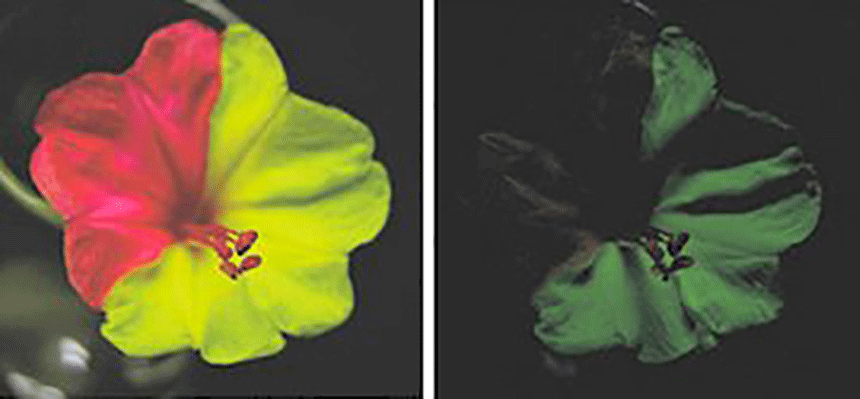Bright blooms that glow
Certain flowers fluoresce, giving off a spooky light.

The parts of a four o'clock flower that appear yellow under white light (left) contain a special pigment. This pigment fluoresces, producing a greenish glow (right), as seen when other colors are filtered out.
Fernando Gandía-Herrero, Josefa Escribano and Francisco García-Carmona







